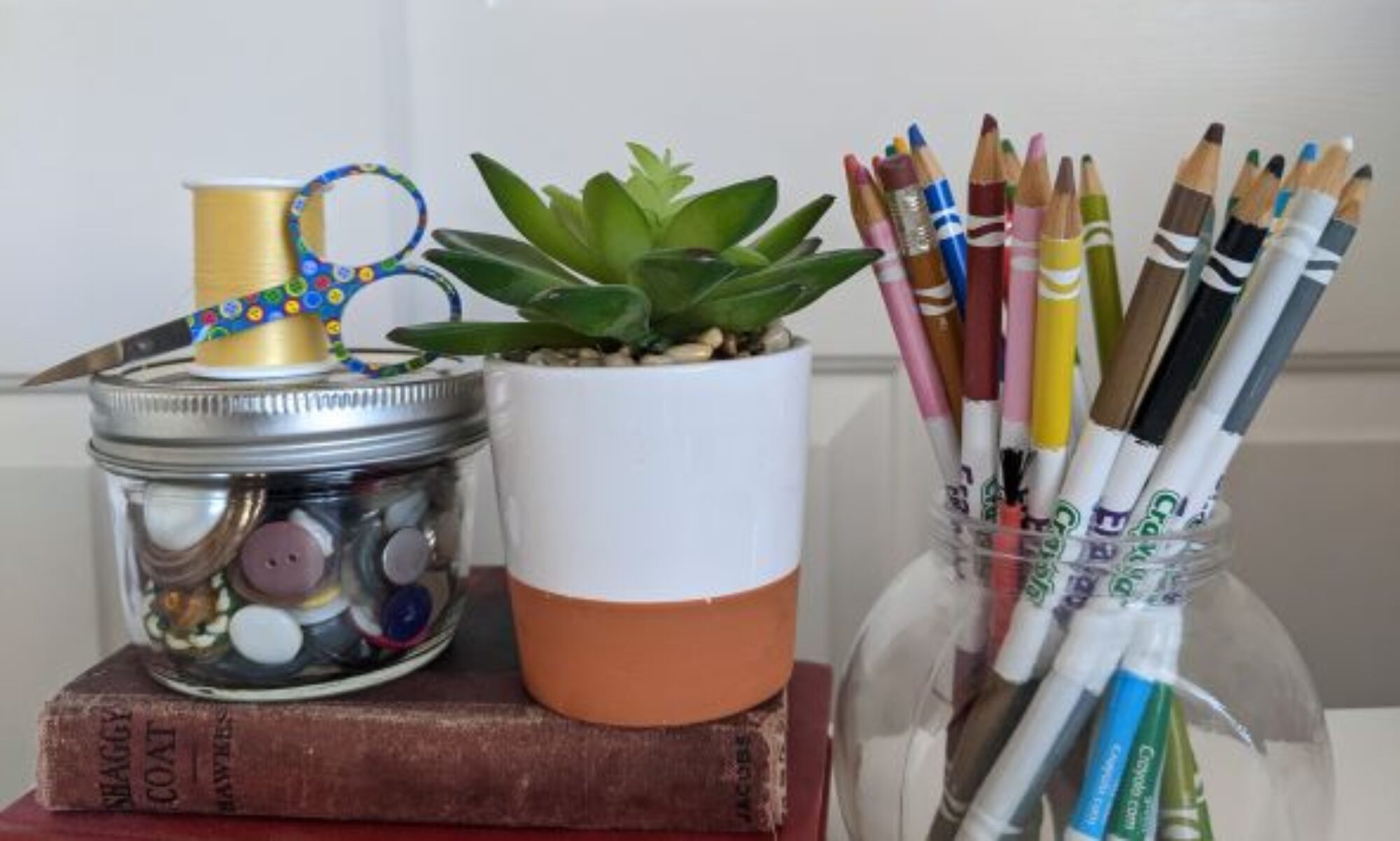…have personalities!
I’m not sure why vintage sewing machines intrigue me. Maybe because we live in a throwaway world, always looking for the latest, fastest, newest models of cars, appliances, phones… and it’s satisfying to find well-made machines from the past that still work. It could be because I learned to sew on a (now vintage) 1970s Sears Kenmore that holds many memories and is still my go-to machine. Or perhaps, as I get older, these vintage machines remind me that us “older models” still have a lot to offer.


I recently visited an antique mall where I discovered a booth dedicated to vintage machines, patterns, and sewing accessories. The catchy name and display of cleverly arranged machines drew me in. The owner had written descriptions giving the sewing machines names and personalities. Each one “seamed like a story” just waiting to be told. The writer in me couldn’t resist. (disclaimer: I don’t claim to be a vintage-sewing machine expert. I am going by what was on the tags and some feeble attempts at research.)
Let me introduce you to:

Caroline
“Caroline hails from across the pond, made in Kilbowie, Scotland. This 185K has a Canadian cousin, the 185J. She’s a cute little mid-century green, ¾ machine circa 1959.”
Made in Scotland… I wonder how she ended up in Indiana? That would be an interesting story.

Sage
“Sage is a Kenmore 158,152 or model 15 for short. Born in January 1967.”
I think it’s interesting that Sage has an exact birthdate. How do they calculate a sewing machine’s birthdate? The date it left the factory? The date the sewist purchased it? Born in 1967, Sage could be big brother to my own 1970s Kenmore and I notice similarities.

Carmen
“Carmen is a Brother Festival 451 offered for parts.”
There was not much information on Carmen’s card so I searched online. The Brother Festivals were made from 1950 to 60 for the home sewist. They came in several mod hues. One site said that the salmon color was rare. “Offered for Parts” meant Carmen had a rough life. I feel sad thinking that she might be harvested for parts. She’s such a cutie.

Buzz
“Buzz is sporting some space-age styling! He’s a Singer 500A Rocketeer who traveled from Anderson, South Carolina in the early 1960s.”
According to my research, Singer “launched” the Model 500 in 1961 at the height of the “Space Age”. These machines were known as “Rocketeers” because of their slick aerodynamic styling inspired by rocket craze of their time. Wow! Buzz is a superstar! I’ll bet he’s been on some amazing adventures! Did he zoom-in from South Carolina?
Blast from the Past
I had to admire the craftsmanship and personalities of each of these machines. What stories they could tell? Hmmmm…my writer brain is working….

Threads of Thought
Do you have a vintage machine or do you remember one your mom or grandma had?
What items from the past interest you?
Can you think up a story or two about any of these machines?

My new book, Out of the Crayon Box: Thoughts on Teaching, Retirement, and Life is now available at on amazon http://amazon.com/author-debravandeventer

Are there left handed and right handed sewing machines available?
Chris
Chris you really got me thinking…I did some googling and found out that this is debatable. The the typical sewing machines are really more left-hand friendly. The controls are on the right, but the left hand does the guiding of the fabric. I did see some machines online that were reversed, but it’s confusing. What most people think, and this makes sense to me, is that sewing uses both hands equally, so it mostly just depends on the machine you were taught with. Bonus point to Chris for his great question!